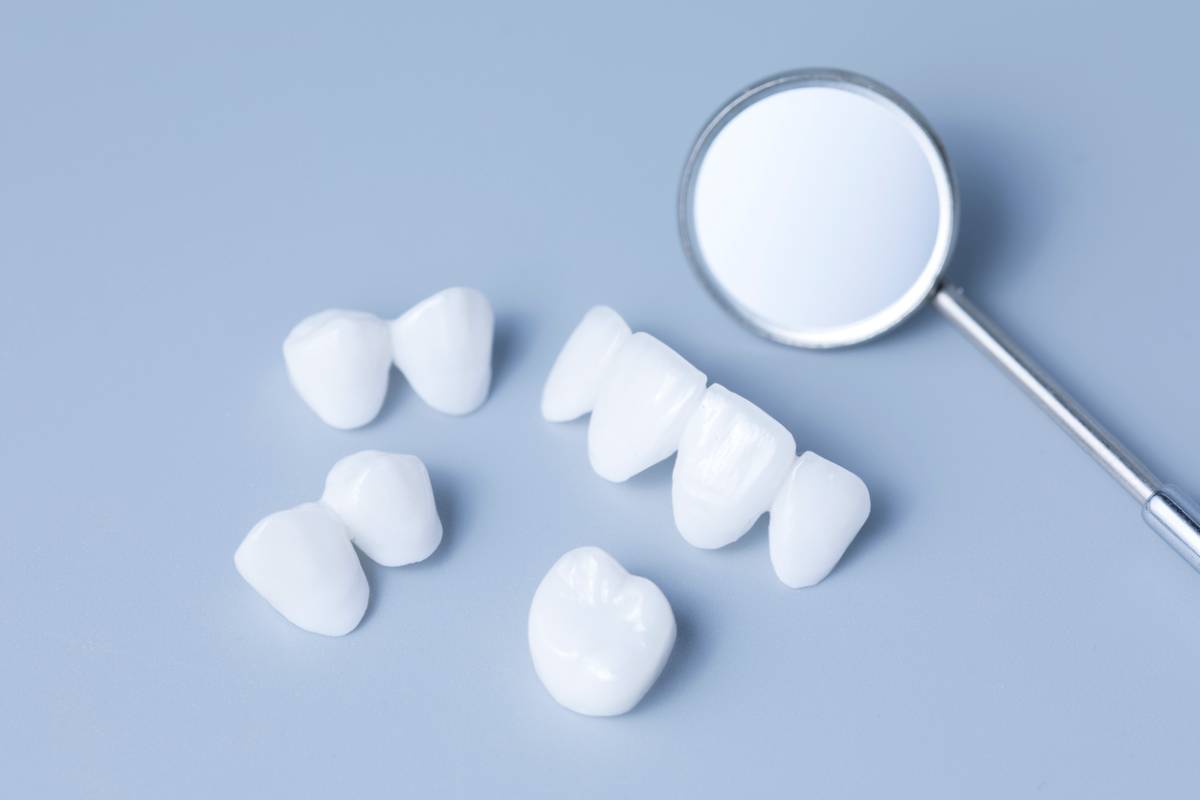A dental bridge replaces missing teeth and renews your bite, smile, and oral health. It is a custom-made replacement tooth to fill any spaces where teeth are missing. Dental bridges restore the proper shape and chewing ability of the mouth. It is otherwise also known as cosmetic dentistry. This guide will look at avoiding dental bridge problems.
Types of Dental Bridges:
There are four types of dental bridges that patients can opt for at our dentist in Bloomington:
Traditional Dental Bridge:
A traditional dental bridge is composed of one dental crown that is adhered to both surrounding teeth but with a custom-made fake tooth that fills the gap in between the surrounding teeth. It is made of either porcelain or ceramic. Traditional dental bridges are very commonly used.
Cantilever Dental Bridge:
A cantilever dental bridge uses only one anchor tooth while the fake tooth fills in the gap. This type of dental bridge is usually used in the front of the mouth as placing them on the back could put more strain due to one anchor.
Maryland Bonded Bridge:
Like the traditional dental bridges in Bloomington, this type of bridge is anchored to surrounding teeth, but instead of crowns, a plastic or metal or porcelain material is used. It is permanent and attached to natural teeth using frames. The strength of this kind of dental bridge depends on the strength of the material used in frameworks.
Implant Bridges:
Implant bridges are like traditional bridges again, but the anchors are adhered and kept in place with dental implants.
Our teeth work together for chewing, biting, and smiling. If any teeth are missing due to oral health issues, it can lead to more teeth loss. This is when dental bridges come in handy.
Avoiding Dental Bridge Problems
There are a few dental bridge problems that patients cannot overlook.
1. Ill-fitted bridges: Before you leave your doctor’s office, you must ensure that your dental bridge properly fits with your gum. An ill-fitted bridge can lead to discomfort followed by irritation. Gum infections can increase, which can lead to severe pain and other complications.
2. Sensitivity: Patients experience this common problem in their gum and teeth after the treatment. The mouth is not habituated to this foreign body and, therefore, is more sensitive for a duration of time. If teeth sensitivity continues for two weeks, patients need to communicate with their dentist.
3. Tooth Decay: You have to maintain oral hygiene after the dental bridge procedure. Otherwise, tooth decay develops. It will cause damage to the bridge foundation. Brush teeth twice daily whether the teeth are natural or implanted. It prevents bacteria. Ask your doctor for an abrasive cleaner or a good mouthwash for the bridge.
4. Cracked Tooth: Little cracks can lead to oral problems. There is a chance of cracks developing in the teeth that serve as anchor teeth.
Caring for Dental Bridges:
Make regular visits to the dental office as needed.
- Bridges are hard and solid. Floss can’t slip in between teeth. Use a doctor-recommended soft bristle toothbrush that reaches all the hidden areas in between teeth but never damages the dental bridge.
- Clean the gum with floss every night. It clears the debris trapped near and under the gum and prevents inflammations.
- Raw vegetables, ice, caramel, and sticky candy can damage the structure of your dental bridge. So, avoid chewing these sticky foods, especially when the bridge is new.
- Too many drinks and sweets lead to decay. Tooth decay destroys the dental bridge and surroundings. Do you have decaying teeth next to your bridge? And did your dentist detect decay near the margins of the dental bridge? Then have it treated as early as possible before it reaches the nerve. The bridge needs replacing in such case.
A Waterpik water flosser is specially designed for cleaning around all types of dental work. It is a good tool to rely on to maintain oral hygiene.
Summary:
Dental bridge helps you provide missing teeth. The common causes of missing teeth are decay, gum problems, and injury. To get a dental bridge, you need a healthy tooth on either side of the missing one. If you face a problem, connect with an experienced dentist near you and go for the dental bridge.


